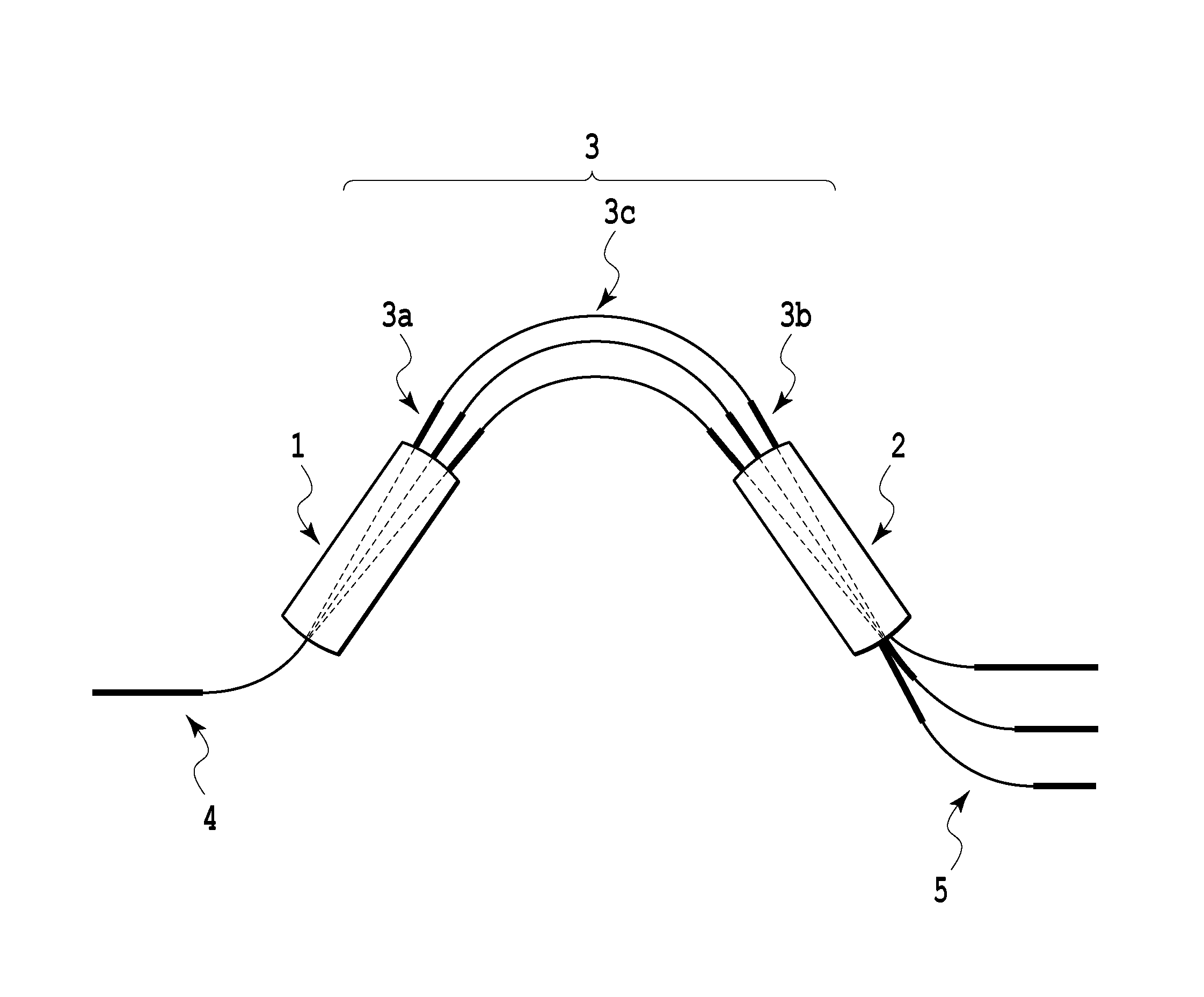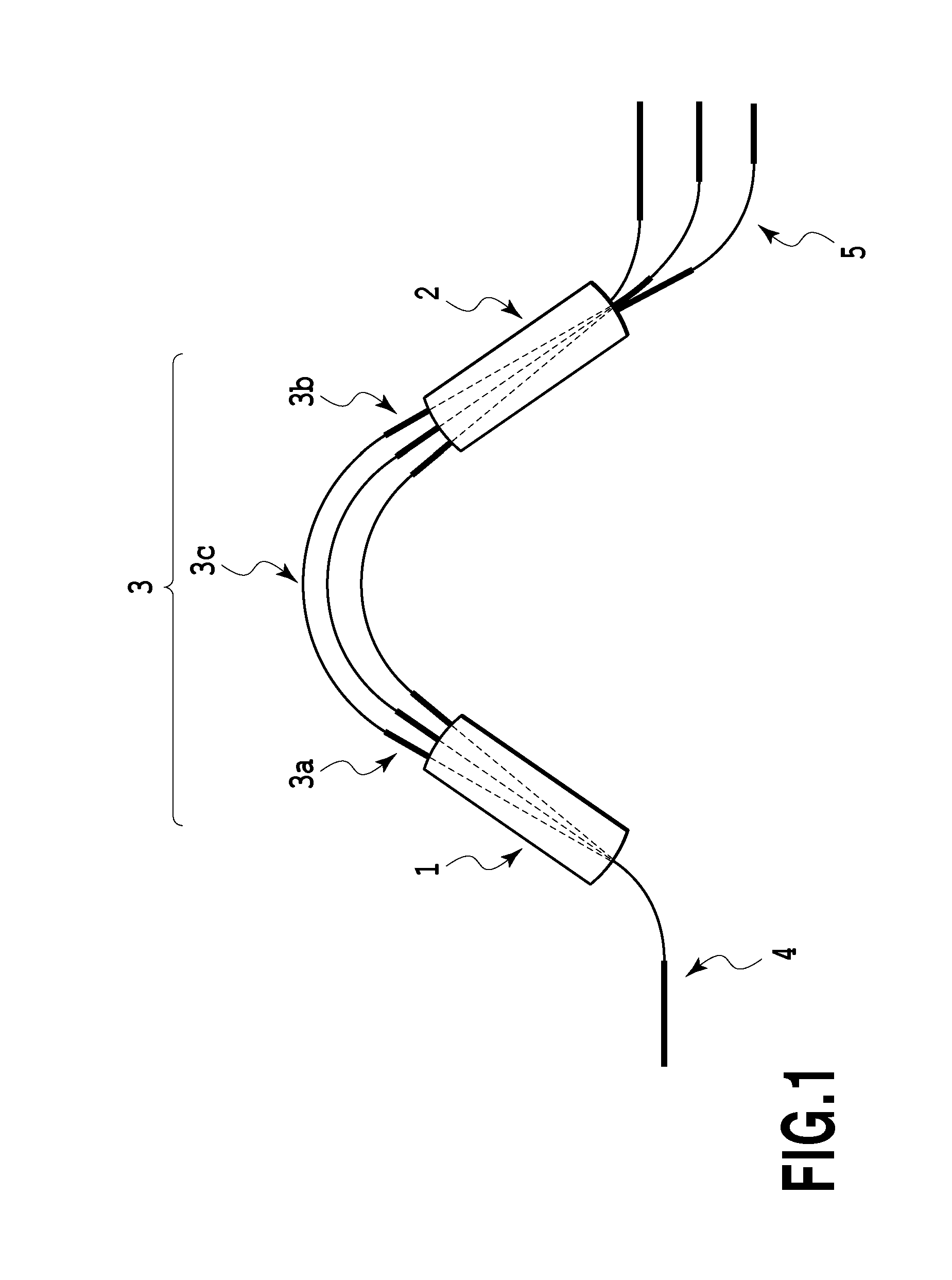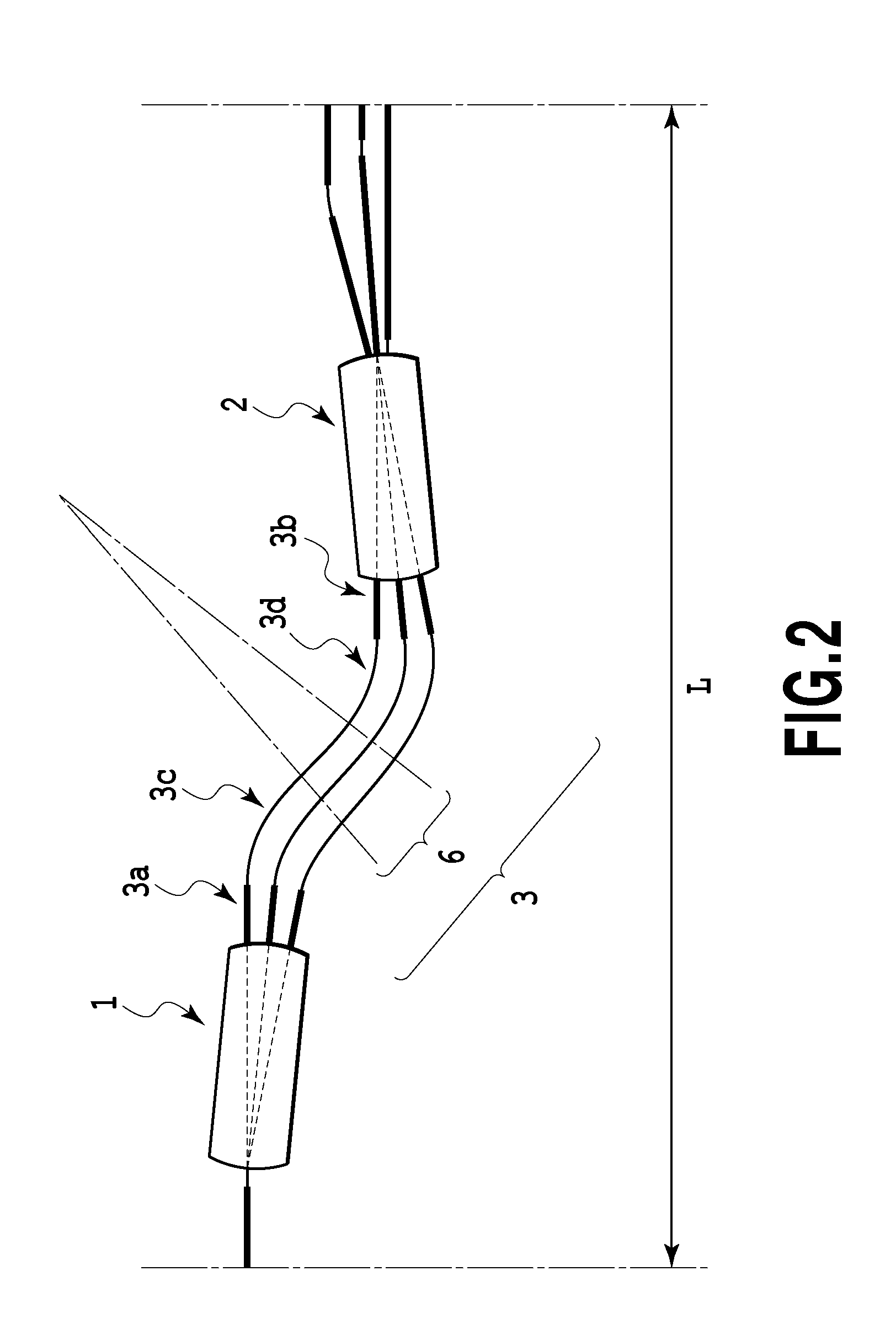Optical multiplexer/demultiplexer
a multi-multi-plexer and optical technology, applied in multiplex communication, optical elements, instruments, etc., can solve the problems of increasing the capability of ethernet-based communication, increasing the difficulty of manufacturing optical modules using plurality of tffs, and unable to achieve easy reduction in size and cost. , to achieve the effect of reducing cost and high cos
- Summary
- Abstract
- Description
- Claims
- Application Information
AI Technical Summary
Benefits of technology
Problems solved by technology
Method used
Image
Examples
first example
[0059]FIG. 4 illustrates the outline of an arrayed waveguide grating optical filter according to this example. As illustrated in FIG. 4, the arrayed waveguide grating optical filter according to this example includes a first slab waveguide 11, second slab waveguide 12, arrayed waveguide group 13, input waveguide 14, and output waveguides 15.
[0060]The arrayed waveguide group 13 is an arrayed waveguide group including S-shaped waveguides respectively configured by connecting linear waveguide 13a, arcuate waveguides 13b, arcuate waveguides 13c, linear waveguides 13d, arcuate waveguides 13e, arcuate waveguides 13f, first waveguide length difference adjusting linear waveguides 17a, arcuate waveguides 13g, linear waveguides 13h, arcuate waveguides 13i, second waveguide length difference adjusting linear waveguides 17b, arcuate waveguides 13j, and linear waveguides 13k in series, and the total length of each of the S-shaped waveguides monotonously increases or decreases by a constant value...
second example
[0080]In this example, in order to make the arrayed waveguide grading optical multiplexer / demultiplexer in the first example function as an aligning waveguide-equipped arrayed waveguide grating optical filter for LAN-WDM signal demultiplexing, the arrayed waveguide grating optical multiplexer / demultiplexer is configured such that wavelengths of optical signals to be demultiplexed are different. FIG. 8 is a waveguide arrangement diagram of the aligning waveguide-equipped arrayed waveguide grating optical filter for LAN-WDM signal demultiplexing designed in this example. Materials for waveguides and waveguide parameters used are the same as those of the arrayed waveguide grating optical multiplexer / demultiplexer illustrated in FIG. 5; however, wavelengths of optical signals to be demultiplexed are different. The wavelengths of the four waves were set to 1295.56 nm, 1300.05 nm, 1304.58 nm, and 1309.14 nm, and in consideration of a difference in transmission loss between channels, an FS...
PUM
 Login to View More
Login to View More Abstract
Description
Claims
Application Information
 Login to View More
Login to View More - R&D
- Intellectual Property
- Life Sciences
- Materials
- Tech Scout
- Unparalleled Data Quality
- Higher Quality Content
- 60% Fewer Hallucinations
Browse by: Latest US Patents, China's latest patents, Technical Efficacy Thesaurus, Application Domain, Technology Topic, Popular Technical Reports.
© 2025 PatSnap. All rights reserved.Legal|Privacy policy|Modern Slavery Act Transparency Statement|Sitemap|About US| Contact US: help@patsnap.com



